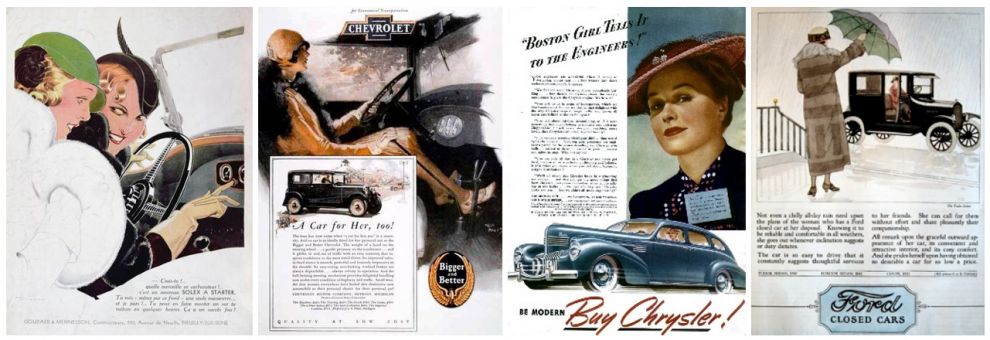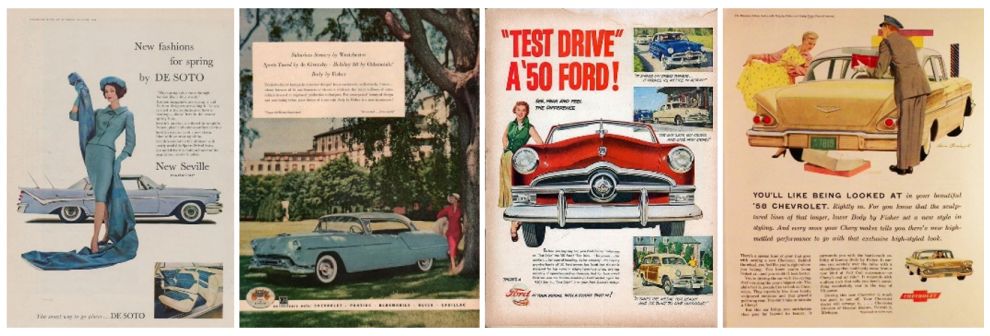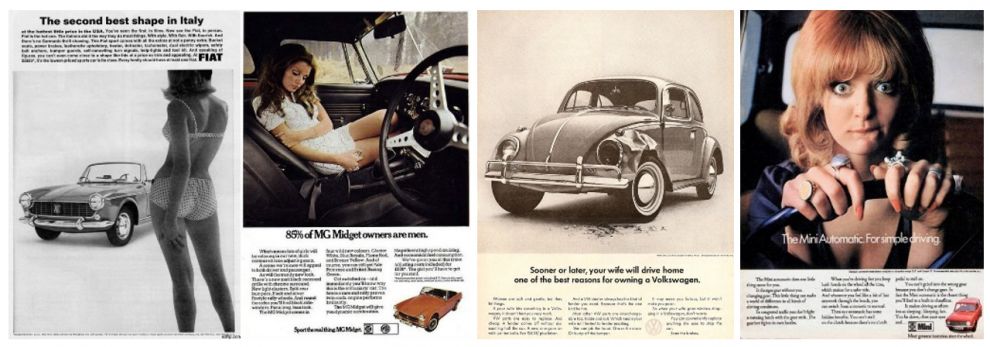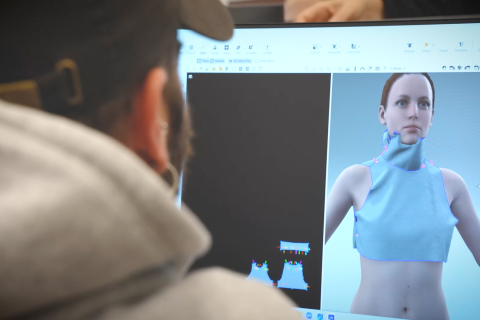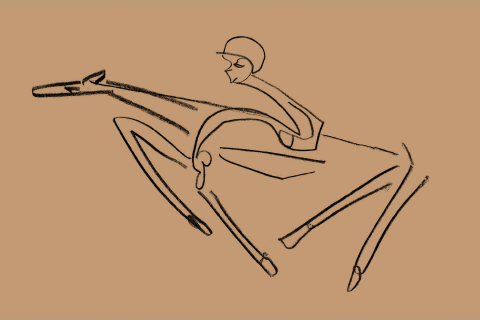Bezalel News
חדשות בצלאל
أخبار بتسلئيل
Be Beautiful and Drive: Women in Car Advertisements
Women appear in car advertisements since the beginning of the 20th century, but the way in which they are represented changed from one end to the other. A historical review shows that these changes are parallel to the battles of the feminist movement. Sometimes the advertisements react in support of its achievements and sometimes they mock them by presenting the extreme opposite of its demands.
Until the fifties the woman was presented in advertisements as the owner of the car who drives it alone or who picks up her friends on the way to recreational time together. She dresses in sheik fashionable clothes, looks independent, free and proud. The advertisement addresses women and presents them along with the advantages of the vehicle in simple terms. A typical advertisement from the twenties reads: "Even a grey rainy day won't stop a woman's plans when she owns a convertible Ford." The advertisement reflects the change in the status of women as a result of the voting rights given to women in the USA and in Britain.
In the fifties, the correlation between cars and the fashion of the time played an important role, but the woman no longer drives the car but rather stands next to it. The mass move to the suburbs at the time, encouraged American families to buy another car for women's "errands". The advertisements marketing these cars to men and women, addressed both genders cleverly. The vehicle in the ad empowers the woman while at the same time she seems to be modeling for a car designed for men. In the advertisement for the '58 Chevrolet, a woman is looking at her silhouette in the car's window and in the smaller ad she is sitting next to the driver. The description reads: "Enjoy. Let them look at you".
In the sixties there was a sharp turning point in the car-woman relationship. For the first time a woman is presented as a bad driver, clueless and destined to have accidents. The ads, clearly targeting men, make fun at the woman's expense. The ads encourage men to purchase a simple car for the woman, one that even "she" could drive. The ad for the Volkswagen beetle reads: "Sooner or later, your wife will drive home. That is one of the main reasons to own a Volkswagen…if your wife collides with something, it will not hurt you as much."
These rebellious feminist women who are fighting for financial and social independence are "put in their place" by these ads. The ads present them as ones who need a man to drive them and to lead them.
In other ads from this period of time, the woman is removed from the deriver's seat and her body is presented parallel to the car, as a desirable object for a man to acquire. An ad for a British car read: "85% of M.G. Midget owners are men. Therefore, many girls will pose in the new adjustable seats…we give you all that for 838 Sterling…getting the girl is on you".
The tendency to objectify women continues into the 21st century. An ad for Lexus from 2013 reads:" The only vehicle that can manage these curves." The letter S is partly hidden behind a model dressed in a bikini, to clarify that we are talking about her curves and not (only) the curves on the road. The ad for buying second hand BMWs from 2008 shows a young woman lying down with no shirt, illuminated dramatically, and the words:" You know that you are not the first." After criticism the ad was buried.
Lately, it seems that ads are expressing the feminist's battle. Again the woman is presented as the owner of the car, as an independent driver who is confident, just as it was 100 years ago. But it is the first time that it is not only white women shown, but rather a wide variety of identities. In ads for Hyundai Tucson in 2020 and in a new ad for BMW there are non-white businesswomen who drives their own cars to work, home or recreation.
Advertisements are a part of shaping the public awareness of gender issues. They can reinforce the idea that women are bad drivers, cause men to belittle them, and make women feel insecure while driving. They can also strengthen the idea that women are simply drivers, no better or worse than men.
Dr Ravid Rovner
Lecturer in the Department of Visual and Material Culture
